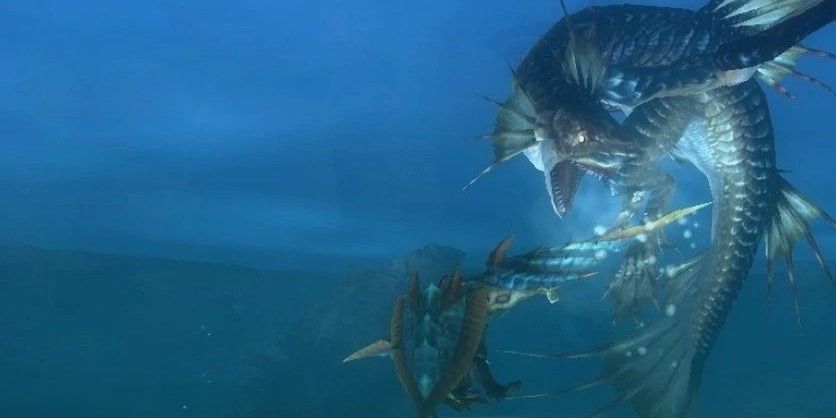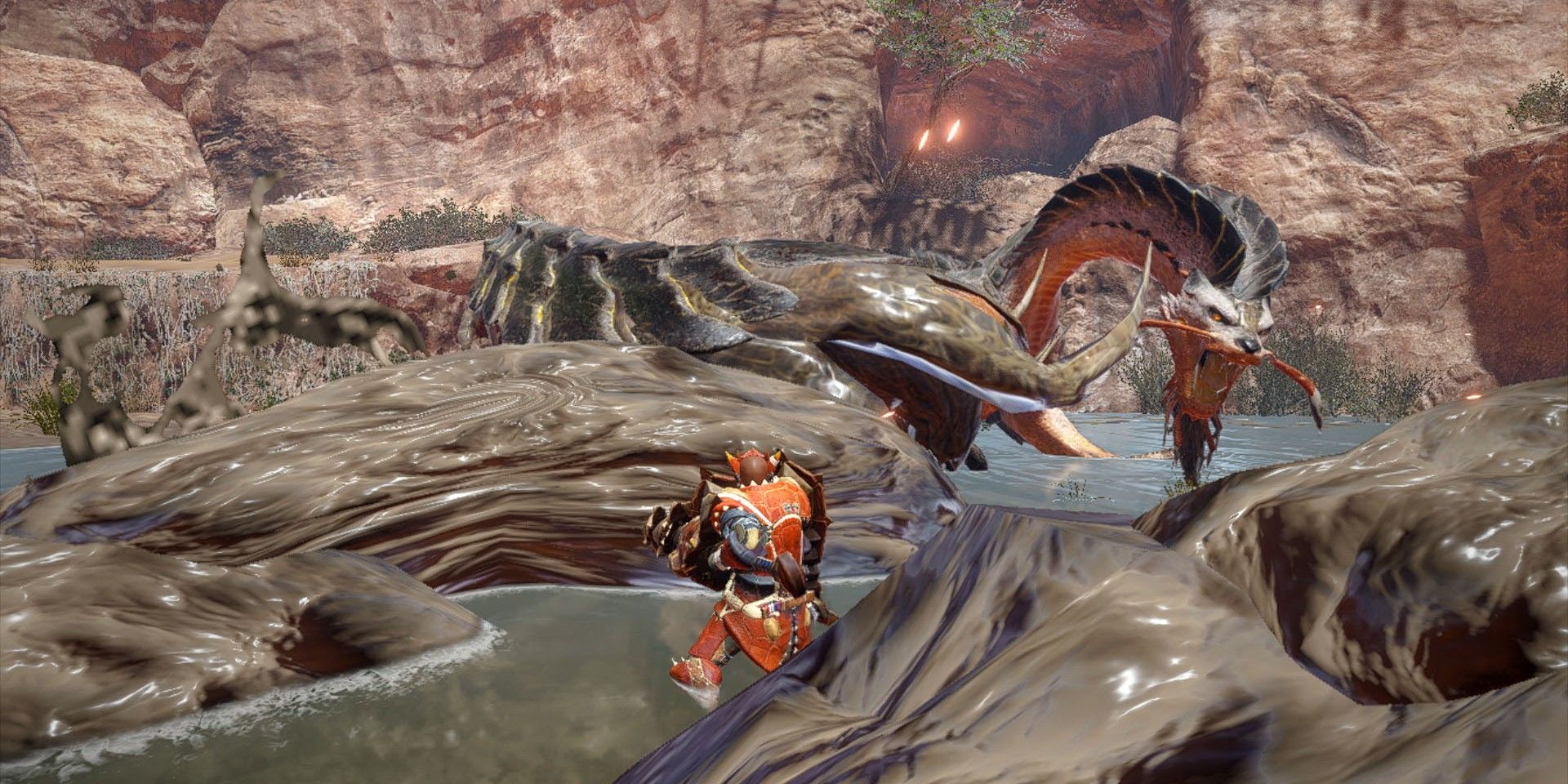The Monster Hunter series has never shied away from introducing mechanics that drastically changed things up. Monster Hunter 4, for instance, introduced mounting monsters and jumping to encourage vertical gameplay, which became a staple mechanic in all the games since. One mechanic that didn’t quite catch on, however, was the underwater combat from Monster Hunter Tri, and I think it deserves to reemerge.
If you’re only familiar with Monster Hunter’s newer titles, it can be difficult to adjust to the clunkiness of some of the older games. You can gather from resource points and set traps in about a second in Monster Hunter Rise, but need 5 to 10 seconds to do the same in Monster Hunter Tri. This clunkiness extends into the hunts as well, with some monsters having disjointed hitboxes for attacks and consumables forcing you into an uncancelable flexing animation. While most Monster Hunter fans could look past this, as this level of control was normal for the series at the time, many would become frustrated with the water combat because it made a lot of these issues even worse.
Mobility was very limited underwater, making the oversized hitboxes from attacks like the infamous Plesioth hip-check even harder to avoid. In addition, the movesets of weapons were altered underwater to be much slower while the monsters you fought often got faster. These aspects are probably responsible for underwater combat never returning, even though they’d clearly function much better in a modern Monster Hunter title.
Monster Hunter World and Rise made drastic improvements to the hitboxes of monsters, as well as making actions like healing more forgiving by allowing you to move while using items and letting you roll to cancel some animations. Additionally, Monster Hunter Rise’s wirebug mechanic allows you to fluidly move through the air, demonstrating that modern Monster Hunter can already easily handle three-dimensional combat without slowing the action down.
Since modern improvements on mobility would reduce the clunkiness of underwater combat, this would emphasize the best aspect of water combat: local variety. Monster Hunter games can get pretty grindy sometimes, which makes it common for the same monster to be fought over and over until you get an item you need. Modern Monster Hunter games added variety to hunts based on local environmental hazards you can utilize or the “hunting helper” items you can find in Rise, but underwater combat made every aquatic monster behave in a drastically different way.
Monsters move differently while swimming, gain new attacks, and perform the attacks they can do on land in an altered way. You had to think in three dimensions as well, avoiding attacks by moving all around instead of dodging to one side or the other. Whether an aquatic monster is in or out of the water is so important that with some monsters, like the Gobul, a common strategy was actually to lure it out of the water with fishing bait to gain an early advantage.
Monster Hunter Tri introduced an entire section of monsters in the series classified as ‘Leviathans,’ a species of monster similar in build to a crocodile, as a way to introduce more water-based monsters for the new swimming mechanics. Leviathan-class monsters like Royal Ludroth would return in later Monster Hunter games, and new monsters were included in the classification like Mizutsune and Almudron.
Modern Monster Hunter games have had an increased focus on monster ecology, with monsters interacting with each other and their environment much more than before, but the return of the Leviathan class in the absence of water combat makes the ecology feel unnatural sometimes. In Monster Hunter Rise, the wyvern Rathalos will fly around during combat to gain an advantage and retreat to a nest on a high cliff side when hurt, which makes sense. The leviathans in the same game, such as the Royal Ludroth, can often be encountered nearby water, but will never actually enter it under any circumstances.
Leviathans like Almudron and Somnacanth show that the developers want to show this class of swimming monsters in modern games, dabbling with things like mud-burrowing and gliding across ankle-high water, but these ideas can’t be fully realized as long as players are kept out of deep water. For the variety of combat and improvement to aquatic monster’s ecology, it’s time for Leviathans to be released back into the oceans, and for us hunters to follow them there.
Stay connected with us on social media platform for instant update click here to join our Twitter, & Facebook
We are now on Telegram. Click here to join our channel (@TechiUpdate) and stay updated with the latest Technology headlines.
For all the latest gaming News Click Here
For the latest news and updates, follow us on Google News.


